Best Front Yard Trees
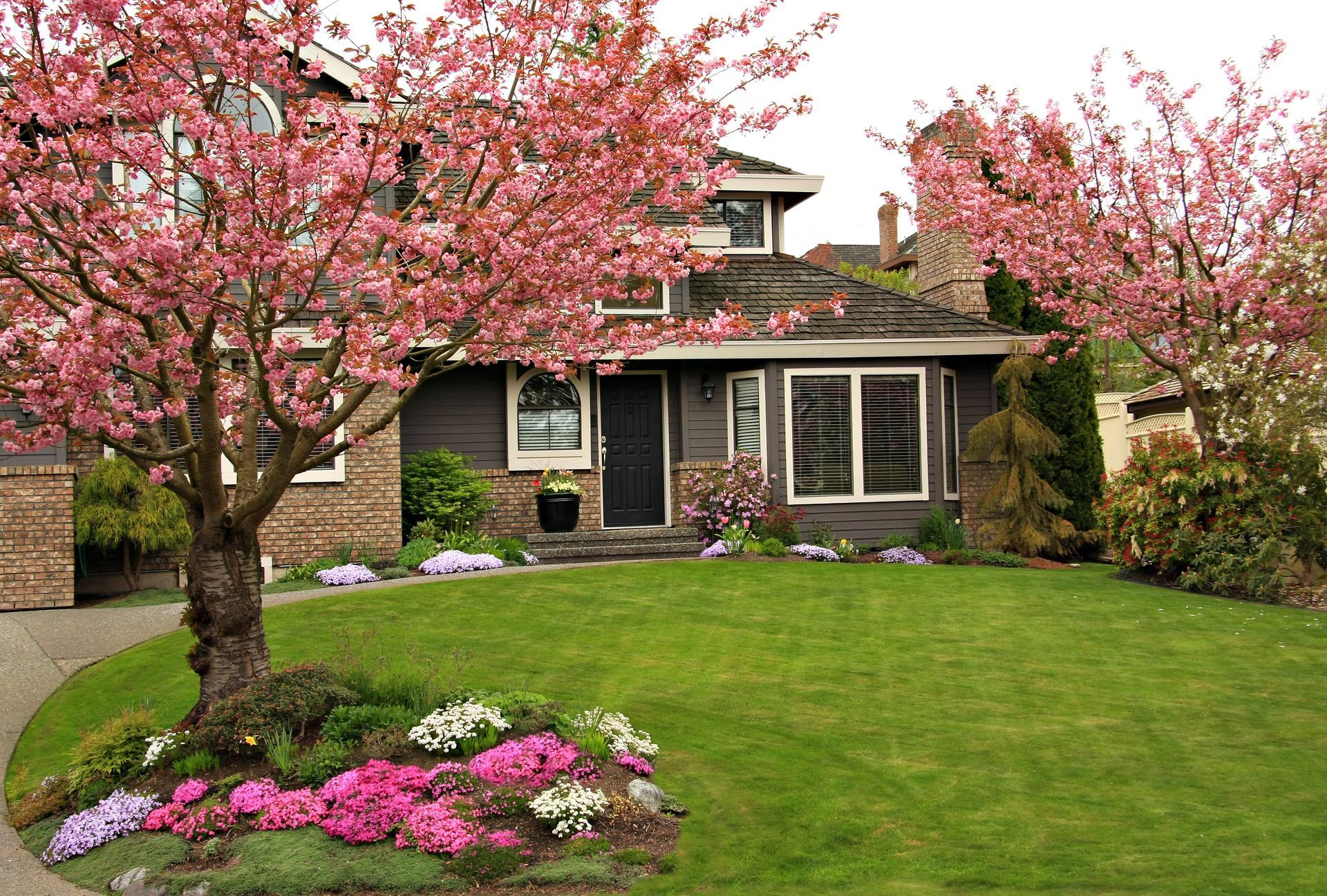
Trying to figure out what trees are best for the front yard? Don't worry.
We've investigated the best front yard trees to increase your house's curb appeal and create that stunning landscape of your dreams.
-
Flowering DogwoodsList Item 1
The flowering dogwood is another example of a tree with stunning fall leaf colors, making it one of the best front yard trees. Pick your choice between three different colors.
-
EvergreensList Item 2
There are so many different evergreen trees that they are the goat of front yard trees. We like the smaller varieties for the front yard, but you can go anywhere from small to fortress-style evergreens.
-
Red Japanese MaplesList Item 3
Red Japanese Maples are a beautiful tree. Their vibrant red color puts a picturesque feel to any front yard landscape. If you don't like red, there are so many more Japanese Maples to choose from.
Top 11 Best Front Yard Trees For Landscaping - Our Full Analysis (Updated for 2023)
Of course, we went with aesthetics mainly, so as always, consult a professional arborist before deciding what plant to put in the front of your house. You'll need to decided between evergreen trees or deciduous, small trees or shade trees.
You have to consider what zone you live in, the amount of sun the tree will get, the moisture level of the soil, and the typical drought conditions of the area. When it comes to your front yard, you really want to have the most impact with the least amount of foliage.
We love aesthetics, but maybe we don't love constantly cleaning up leaves off the front yard. If you are buying from a nursery, be sure to include the cost of transplanting the tree. It's not an overly complicated process, but planting a tree is something most people overlook.
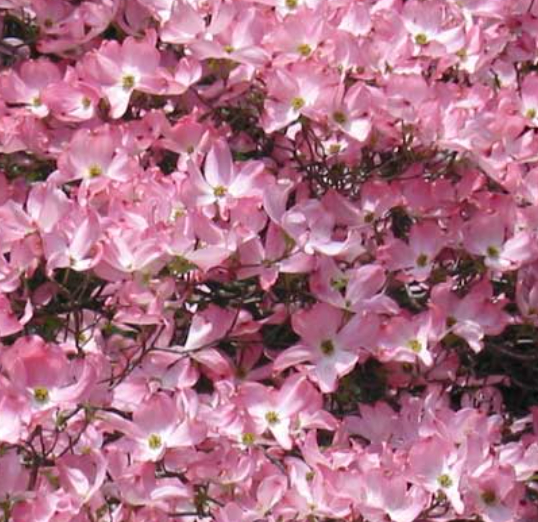
The Flowering Dogwood are awesome flowering trees native to North America. Most people think they recognize the dogwood from its white flowers, but the four white bracts contain a small flower in the center.
White is the dogwood color found in nature, whereas some fancier pink colors are from cultivars. Flowering Dogwood trees are great for the front yard and other landscapes and can grow from 15 to 40 feet tall.
The flowering dogwood is another example of a tree with stunning fall leaf colors, making it one of the best front yard trees. The most popular choices are:
- Red Dogwood
- Pink Dogwood
- White Dogwood
You really can't go wrong with flowering dogwood trees. Be sure to check out some of the varieties below and make a selection for your front yard.
One of our favorite Red Dogwoods is the "Chief Cherokee." It presents different red colors throughout the seasons of the year. They are pink or fiery red during the early spring bloom and then a dark magnificent red in the fall to winter months.
Pink flowered dogwoods are beautiful hardy trees that require almost no upkeep. Let their breathtaking pink bloom uplift you in the spring after the cold, harsh winters.
White dogwoods are another beautiful flowering tree that can help bring life to a landscape. Not only that but white can go with almost any color house. White dogwoods are cherished because they are one of the first trees to bloom in spring. If you see a white dogwood blooming, you know warm weather is on the way.
PROS
- Beautiful pink or white blossoms in spring
- Attract insect pollinators to your garden
- Easy to grow from seeds
- Can be propagated from cuttings
CONS
- Poisonous blossoms
- A strong smell that some people don't like
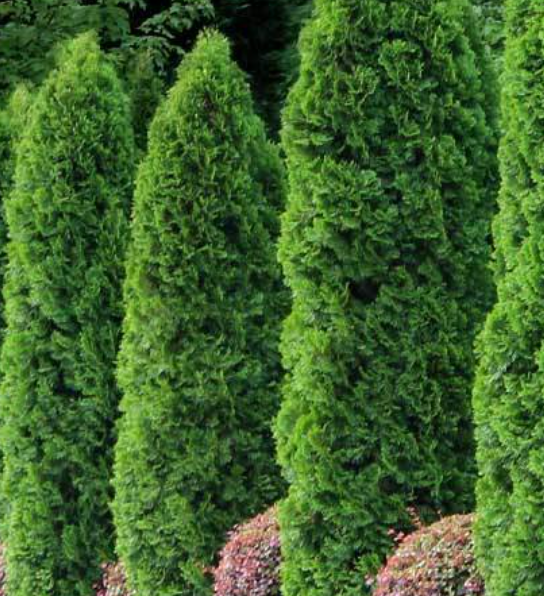
There are so many different evergreen trees that they are the goat of front yard trees. We like the smaller varieties for the front yard, but you can go anywhere from small to fortress-style evergreens. Some of the best evergreens are:
- Emerald Green Arborvitae
- Italian Cypress
- Oakland Holly
We are privacy aficionados, so without a doubt, our favorite is the arborvitae. It depends on your taste, and the aesthetic you want for your front yard.
PROS
- Provide year-round color and texture to your landscape
- Some varieties are fragrant and can be used for cuttings
- Easy to care for and rarely require pruning
CONS
- Some varieties will not survive temperatures below freezing
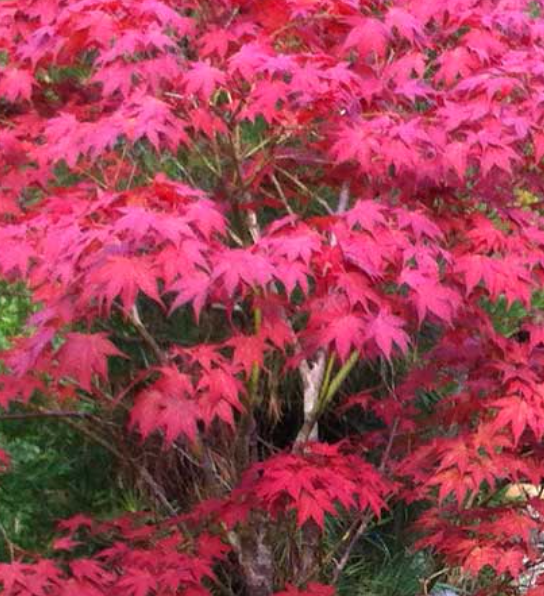
Red
Japanese Maples are a beautiful tree. Their vibrant red color puts a picturesque feel to any front yard landscape. We often imagine them next to a beautiful stream of water with a statue nearby.
The tree is known for its beautiful purple-reddish color that changes to much brighter reds and oranges in the fall season.
It has long lobes in its leaves, and the tree grows upright while the leaves themselves appear to be descending. It's a bigger tree, so it can grow anywhere from 15 - 20 ft, but it will add a stark contrast to the color of your home. Instant curb appeal.
When it comes to Japanese Maples, you have options. You may not want the standard Red Japanese Maple standing tall in your front yard. We like the following Japanese Maples:
- Emperor Japanese Maple
- Bloodgood Japanese Maple
PROS
- Have beautiful foliage year-round
- Don't require extensive fertilization
- Limited pruning needs
CONS
- They be very pricey
- Don't grow very tall
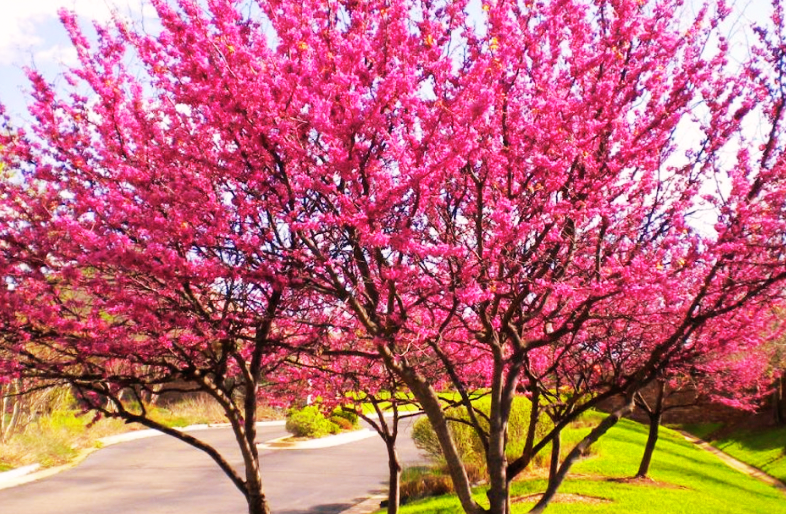
The redbud tree is another wonderful specimen native to America that can grow to about 30 ft tall with a 33 feet spread. The Eastern Redbull is great for pollinators as they are earlier bloomers. These trees have heart-shaped leaves with pee-like flowers. They'll add a beautiful pop to your front yard.
These trees are absolutely beautiful but don't mistake their appearance for being dainty. They are incredibly hardy trees, they are deer resistant, and they like even moisture - they don't want to be too wet but aren't extremely drought-tolerant trees.
The redbud tree doesn't have too much maintenance but you'll need to prune the dead stuff typically in late winter/early spring which is the same time you should fertilize the tree. Depending on the zone, the eastern redbud can have nice yellow trees in the fall.
If you aren't in love with the Eastern Redbud, have no fear. There are many different redbud varieties. See these:
- Forest Pansy Redbud
- Royal White Redbud
PROS
- Vibrant blooms for ornamental purposes
- Easy to grow
- Drought-tolerant
- No extensive watering or fertilization needs
CONS
- Vulnerable to a variety of pests and diseases
- Require regular pruning for shape and size maintenance
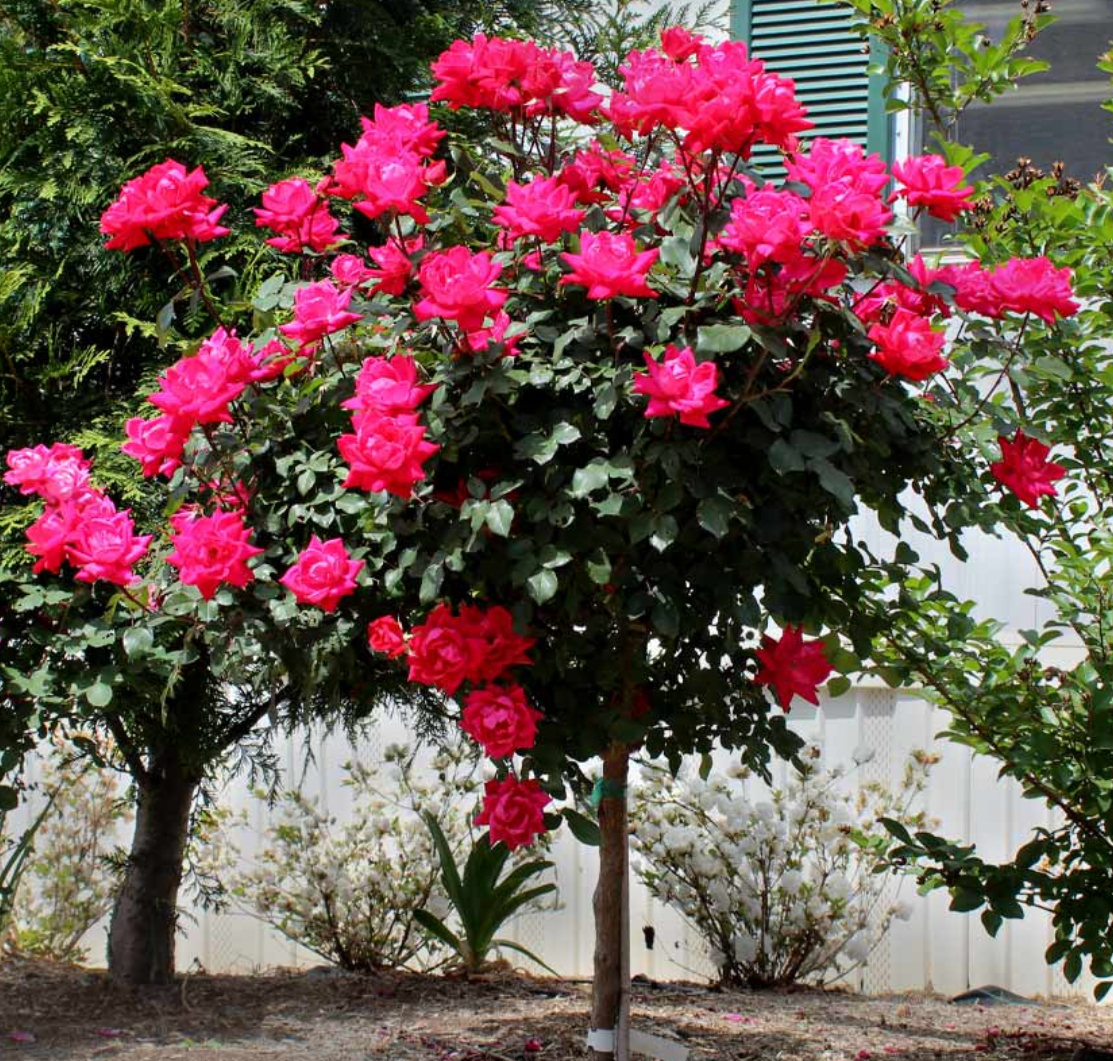
The rose tree exists for one reason and one reason only: to make your front yard look debonair. Seriously, you'd be hard-pressed to find a fancier-looking tree. Rose tree care isn't too complicated. Most people can take care of them with limited experience.
One of our favorite new rose trees is the Knock Out Rose tree, and for a good reason. It literally knocks your breath away with its stunning colors. Not only that, but it doesn't grow too big and is very disease resistant. A perfect addition to your landscape.
PROS
- Beautiful and fragrant blooms
- Large number of cultivars are available
- Can grow in most climates
CONS
- Messy to take care off
- Prone to many diseases
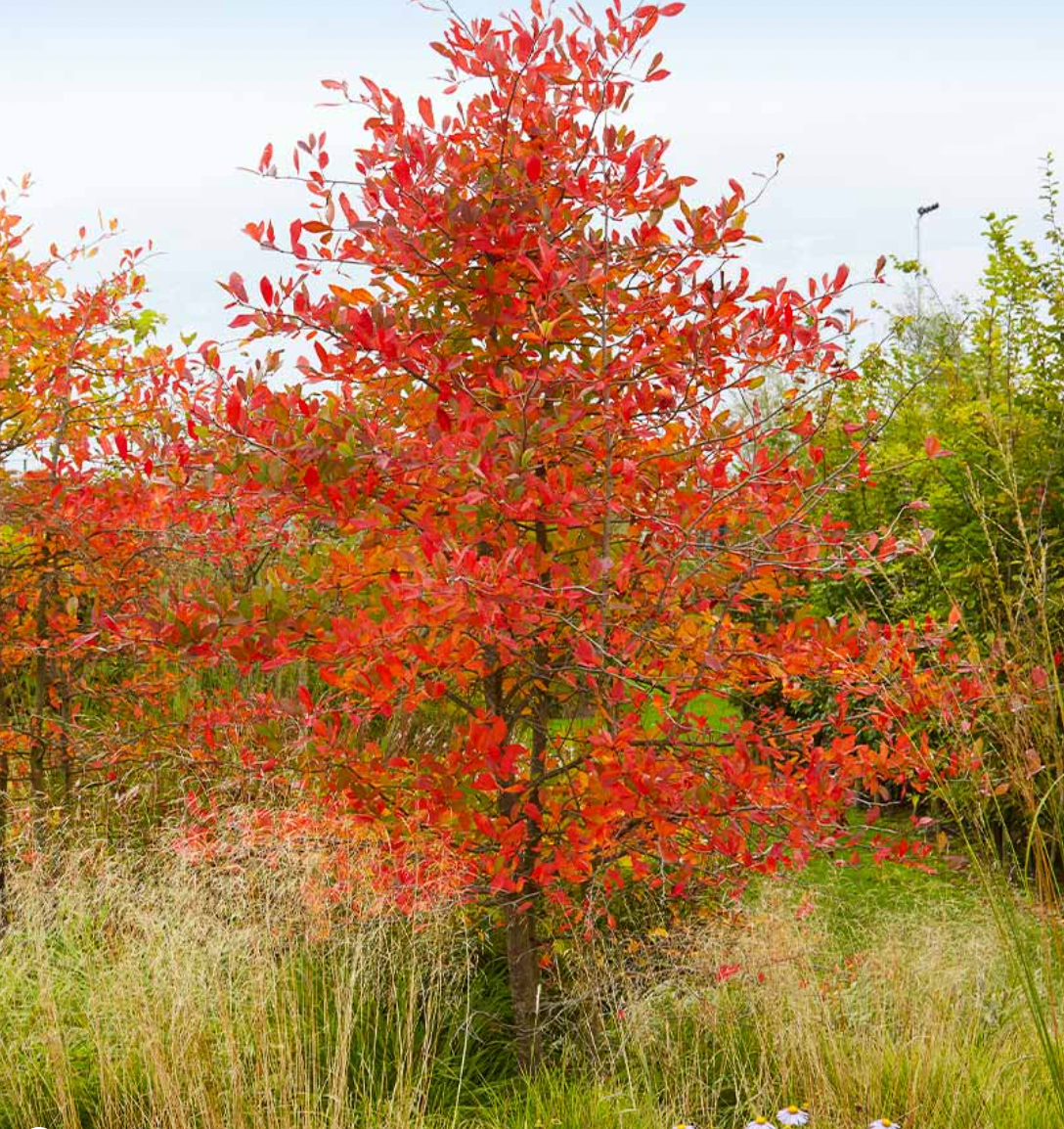
Native from Maine down to the Carolinas, the serviceberry is another tree used in native landscaping. It can grow as a small shrub or a tree, getting up to about 25 feet tall. At 25 feet tall, the serviceberry are great shade trees.
It can be expected to grow in hardiness zones of 4 to 8. It's not super picky about the moisture in the soil and does well in part shade areas.
In the early spring, the Serviceberry has tiny white flowers, and by May to Mid June, the leaves are green and you'll find it sporting its famous red fruits that look similar to blueberries (though they are much sweeter). If you pick the berries, you'll want to do it before the birds start eating them, and also before they start to change to a rustier green color.
There's a bunch of different species serviceberry so be sure to pick one that fits well into the landscape of your home. One of the best you'll find out there is the Autumn Brilliance. It's stunning reds create so much pop on your landscape.
PROS
- Native to North America
- Attract butterflies and birds
- Do not attract many pests
CONS
- Have a short bloom period of about two weeks
- Can be attacked by spider mites and aphids
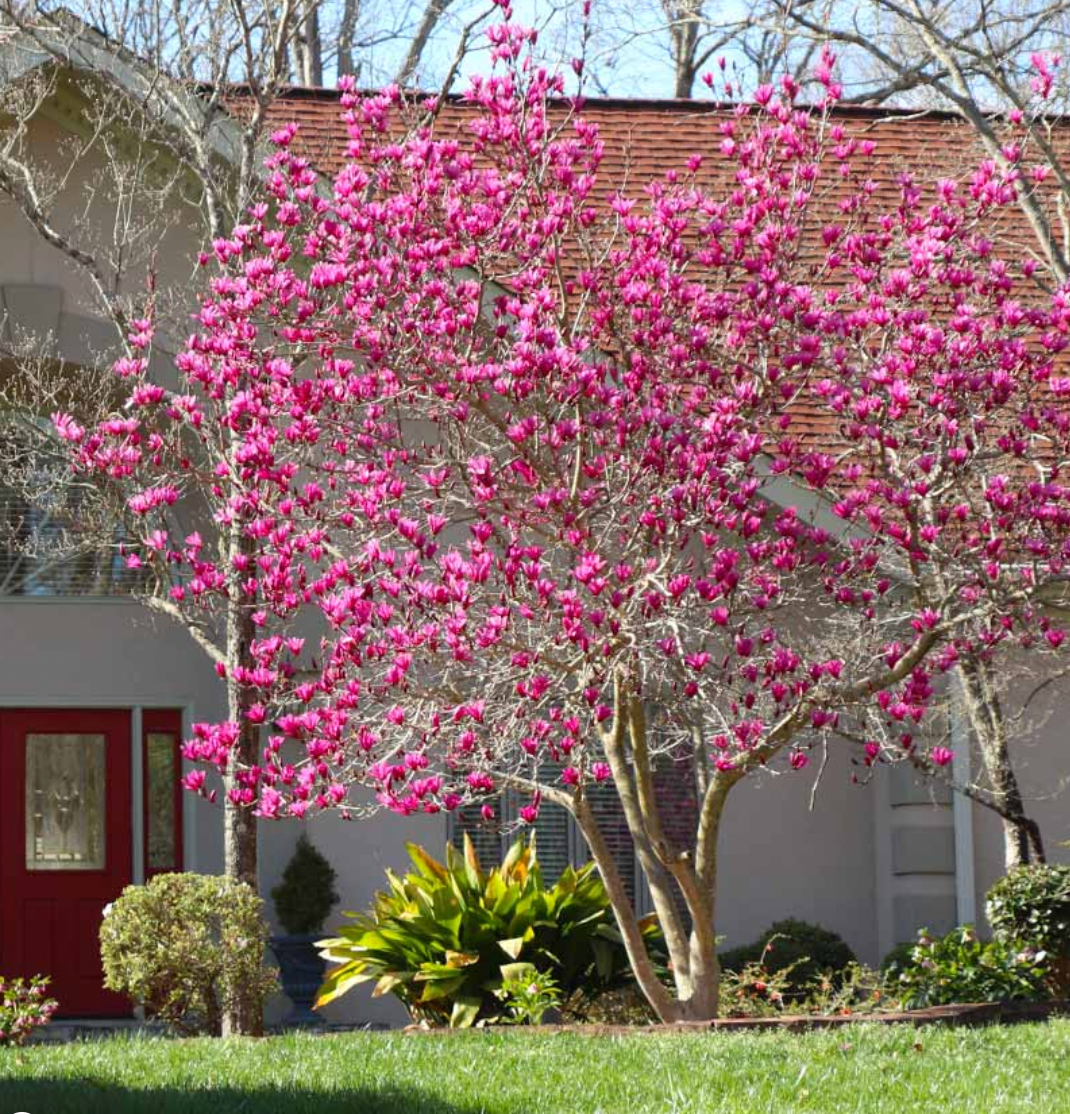
Magnolias, oh magnolias. Another common tree in the United States with the most iconic being the Southern Magnolia. That being said, these can grow pretty much anywhere in the US so long as the Zone is about 4 to 9. Some magnolia varieties can bloom in early spring, while others might bloom late spring early summer.
Though we mentioned the Southern Magnolia, there are many different types like the Saucer or the Star. Depending on if you pick an evergreen or a deciduous tree will change the type of care and amount of sun the tree will need.
Some of our favorite varieties include:
- Jane Magnolia
- Ann Magnolia
- Southern Magnolia
Taking care of Magnolia trees isn't too complicated. That's why these beauties are some of the most beloved front yard trees.
PROS
- A stunning range of flower colors, from pink and white to purple
- Sweet smelling flowers
- Provide shade during hot summers
CONS
- Not suitable for cold climates
- Leaves are susceptible to sunburn
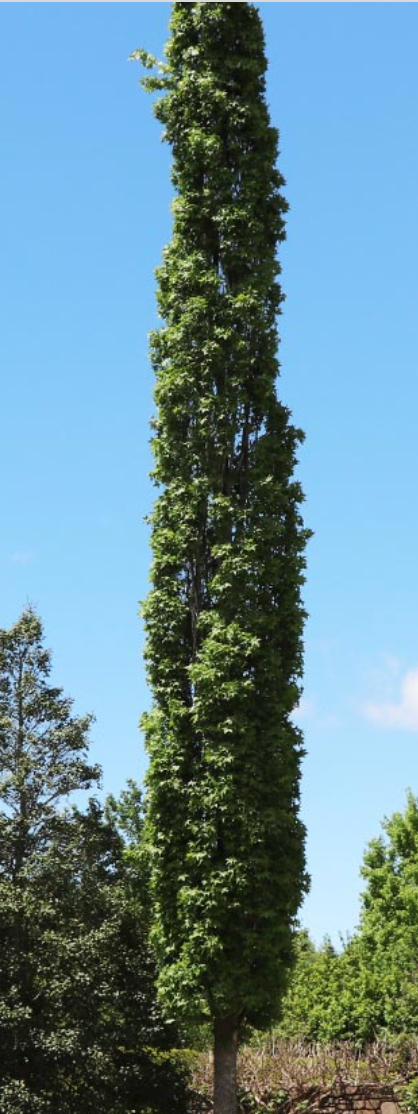
The Sweetgum is a large tree that is native to North America, Europe, and Asia. This tree gets its name from the sticky resin that is produced by its bark. The American Sweetgum grows in zones 5 to 9.
The Sweetgum is a popular tree for landscaping because of its beautiful fall foliage and its distinctive shape. The leaves of the Sweetgum are star-shaped and they change color in the fall, ranging from yellow to orange to red.
The fruit of the Sweetgum is a small, hard candy that is brown or black in color. It has moderate drought tolerance and likes a minimum of six hours direct sunlight per day.
PROS
- Star-shaped leaves bring vibrant color to your garden
- Adapts well to a variety of soil types
- Best used as an ornamental tree
CONS
- Fruit can be a nuisance as they tend to litter the ground below the tree
- Unreasonable for most home owners

We went over evergreens above but we really love the Colorado Blue Spruce.
The Colorado Blue Spruce is a large evergreen tree that is native to North America.
This tree gets its name from the blue-green color of its needles.
The Colorado Blue Spruce is a popular tree for landscaping because of its beautiful color and its ability to tolerate cold climates.
The Colorado Blue Spruce can grow to be over 100 feet tall and it has a lifespan of over 500 years. Hopefully you great grandchildren like this neat variety.
It grows in Zones 2 to 7 and is one of the most popular evergreen trees. Not only that, it's one of the fastest-growing shade trees in Colorado.
PROS
- Beautiful foliage that changes colors throughout the year
- Adapts to most conditions
CONS
- Prone to needle and root diseases, such as cytospora canker and needle blight
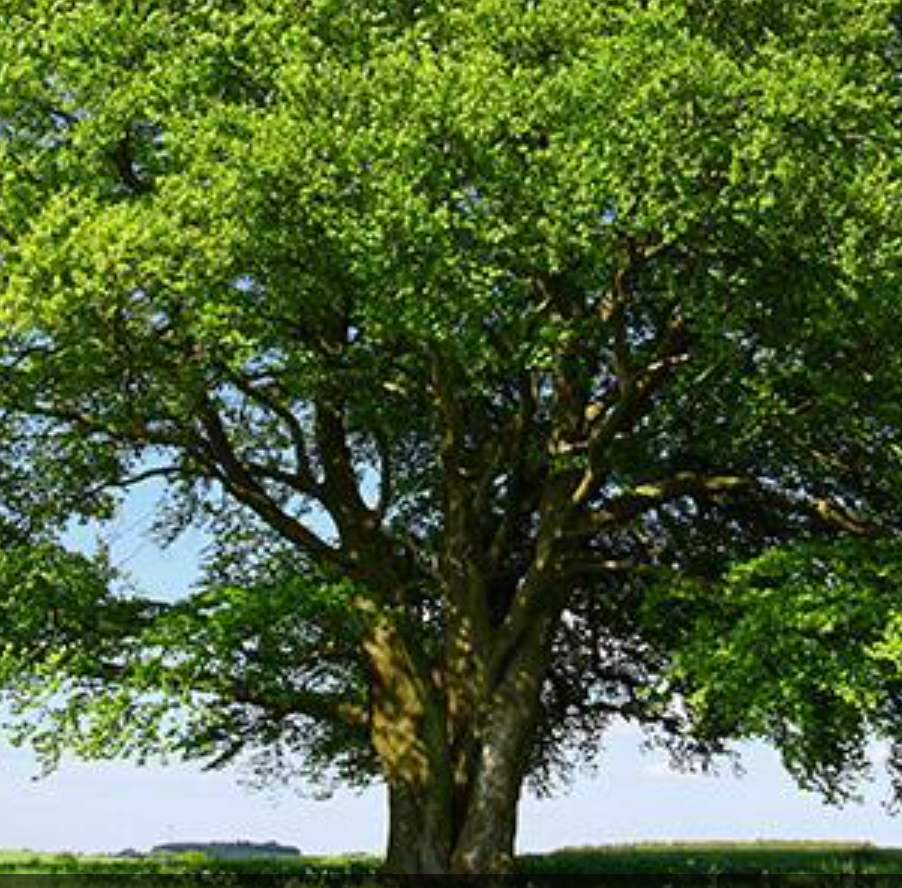
A slow growing tree often used in parks and golf courses that captures the hearts of many due to its beautiful bronze color in the fall. The American Beech Tree grows in Zones 4 to 9, and are considered both shade trees and ornamental.
The American Beech enjoys full sun and at the same time is very sensitive to drought conditions. The tree is best if you have a giant front yard as it needs quite a lot of space to grow but since its sensitive to drought because of its shallow root system.
Might not be the best option for most readers but we love the American Beech so much that the rare occasion it is spotted on a front lawn made it get to the list.
PROS
- Grows up to 100 feet tall
- Leaves have a soothing effect on the stomach
CONS
- A slow-growing tree that takes many years to reach its full potential
The Paper-Bark Maple is a small to medium-sized deciduous tree that is native to Asia. This tree gets its name from the papery bark that peels off of its trunk. These are not super common in the front yard, but they are an option.
The Paper-Bark Maple is a popular tree for landscaping because of its beautiful fall foliage and its unique appearance. The leaves of the Paper-Bark Maple are large and they change color in the fall, ranging from yellow to orange to red.
The fruit of the Paper-Bark Maple is a small, hard candy that is brown or black in color. The Paper-Bark Maple is one of the best trees for growing in a pot so consider this if you don't have a huge yard. You will love its unique flowering shape if you can fit this beauty into your yard.
PROS
- Grows beautiful red flowers in the spring
- Attractive bark color and texture
- Bark is used to make bandages, containers, bedding, and more
CONS
- Requires regular pruning
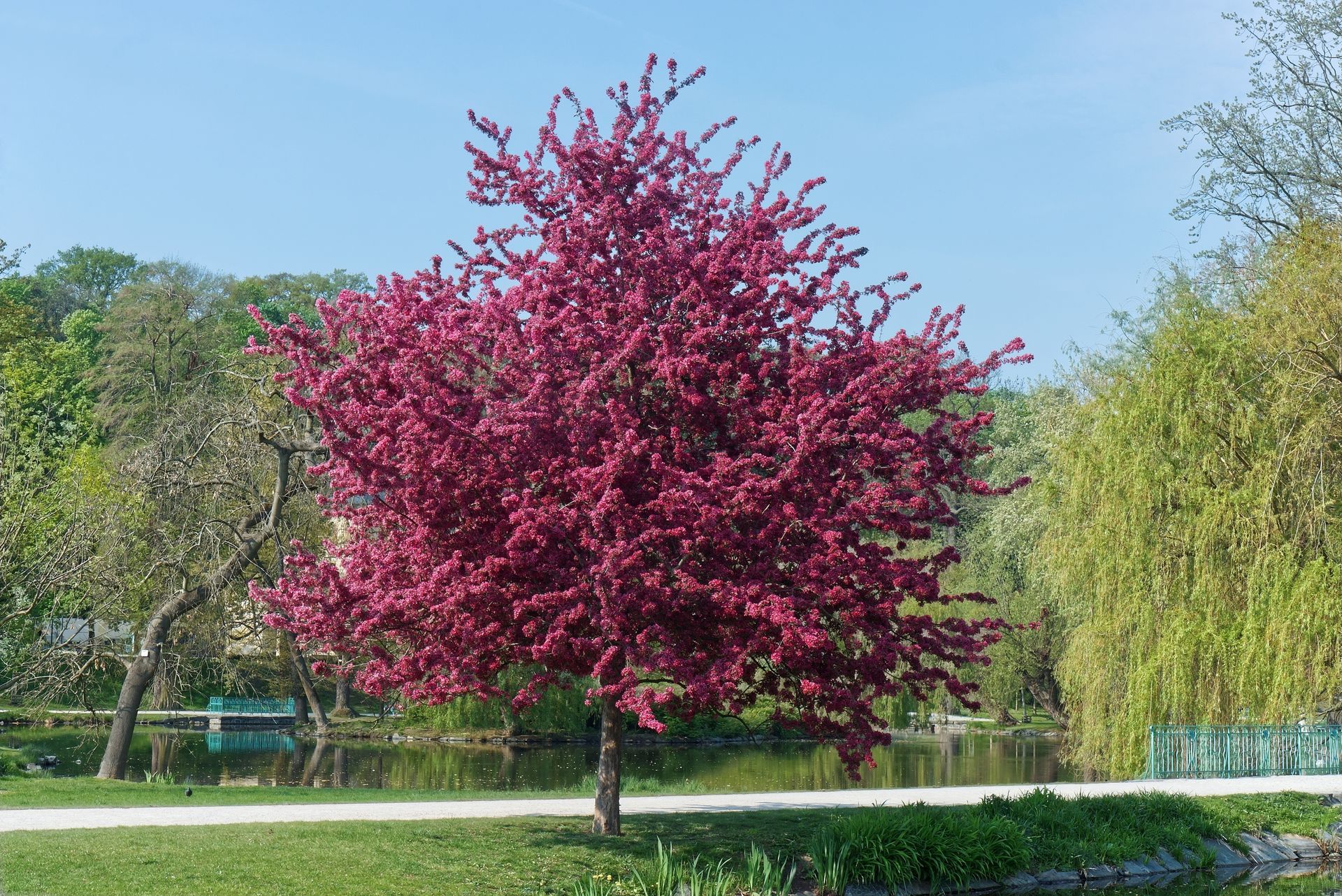
Flowering crabapple trees are another beautiful tree for the front yard. The come in different shapes and colors but one of the most popular is the Prarifire Crabapple tree.
If you live in Zones 4 to 8, your area can sustain this crabapple. But be ready around September to October for harvest time. Crabapples will be in your yard!
PROS
- Lovely color
- Perfect height
CONS
- The crabapples
Sweet New Earth Final Say for Best Trees for Front Yard
At the end of the day, we like either flowering dogwoods or evergreens for privacy. These are two completely different looks and aesthetics that almost require separate households to truly appreciate the difference between them
FAQs
Thanks for stopping by! Now that you picked out a tree you'd like to plant in the front yard, you are going to need some tools to dig planting holes for your new flowering trees in the front yard. Some other honorable mentions would be weeping cherry trees, but for the sake of brevity we can't put everything in this one post.
We hope you like this article on the best front yard trees. Be sure to check out some of our state-specific trees guides, or maybe one of our articles on tree loppers. Whatever you need, we got it.
Join our community!
Join to receive guides, insights, and the latest gardening deals!
